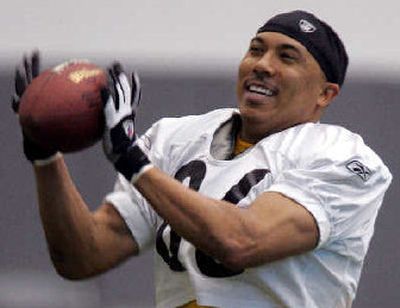Pittsburgh has run into puzzling change

PITTSBURGH – Chuck Noll or Bill Cowher. Terry Bradshaw or Ben Roethlisberger. Lynn Swann and John Stallworth or Hines Ward. The 1970s or the 2000s.
The coach and the quarterback don’t matter, and neither do the wide receivers nor the era. The Pittsburgh Steelers always stay the same, in good times and bad, and that means their offense relies on the running game to set up the pass, and not the other way around.
Not these Steelers, at least not in these playoffs, and that’s a source of worry to coach Bill Cowher. Especially just a week from only the second Super Bowl appearance in 26 years for a franchise whose offensive plan changes less than any other NFL team.
For all the attention given Jerome Bettis’ Super Bowl homecoming to Detroit for the Feb. 5 Super Bowl against Seattle, and Bettis’ three short-yardage touchdown runs, the Steelers’ running game was surprisingly ineffective during their three AFC playoff road victories.
A year after running the ball more than any NFL team in the last 20 years, the Steelers were limited to 2.7 yards per carry at Denver and Indianapolis. Their 3.2-yard average in three games is more than a yard per carry less than their opponents (4.3) and well off their regular-season average of 4.0.
The drop-off reflects the change in tactics that saw the Steelers start the Colts and Broncos games by throwing first to build a lead, then running the ball to preserve it. Both opponents knew the Steelers would try to sit on the leads with their running game and adjusted their defenses accordingly.
Regardless, the lack of yardage is becoming a concern to Cowher. Willie Parker, a 1,200-yard back, has been held to a 2.7 average and doesn’t have a playoff run longer than 14 yards. Bettis has minimal yardage – a 2.65 average over two games – since he had a 25-yard run against Cincinnati.
So far, Roethlisberger’s effective throwing – seven touchdown passes, with only one interception – has more than made up for the lack of rushing.
So far.
“We’re doing what we have to do to move the football, and teams have been stuck on taking away our running game so we’ve had to pass to move it,” rookie tight end Heath Miller said.
All-Pro guard Alan Faneca said the Steelers simply are taking what defenses are giving them, and that the running game hasn’t, and won’t, go away.
“It’s always run-first,” Faneca said. “The last couple of games, people decided to stop the run so we passed the ball, got the lead and sat on the lead. You’re not going to set the world on fire when you’re up 17 points. Look at the situations: We were trying to kill the clock and trying to pound it out.”
Cowher looks at the rushing statistics and doesn’t like what he sees, despite Roethlisberger’s strong throwing. The second-year quarterback was 14 of 19 (73.7 percent) against Cincinnati and 21 of 29 (72.4 percent) against Denver, the two best playoff completion percentages for any Steelers quarterback who attempted more than 10 passes in a game.
“We’ve got to run the ball better, there’s no question about that. We’ve played two pretty good defenses and this one’s no different, they’re ranked fifth against the rush,” Cowher said of Seattle. “We have to be able to run the ball more efficiently than we have the last couple weeks. We can’t sit there and rely on throwing the football all the time. Not that we don’t want to have balance. We do.”